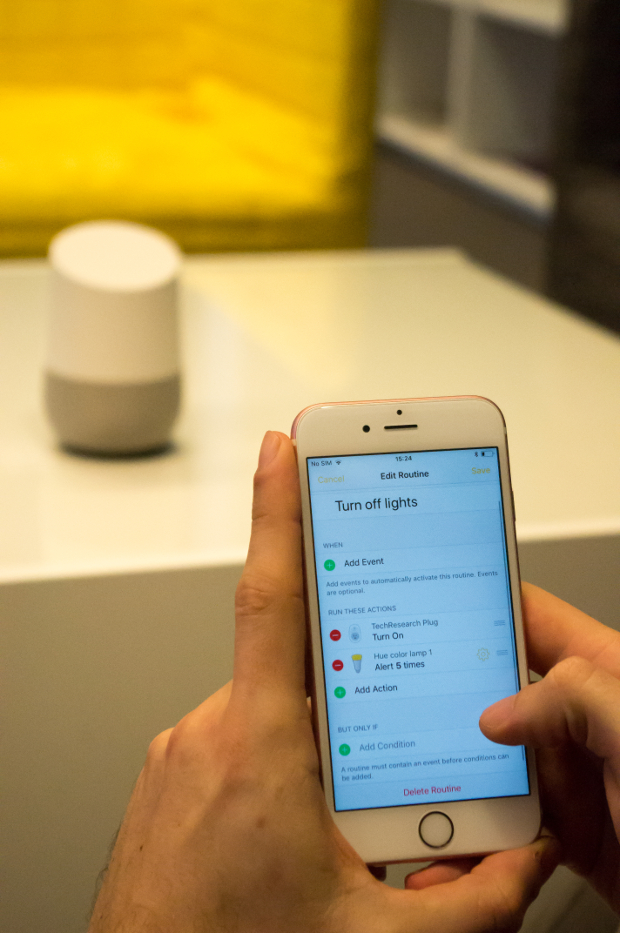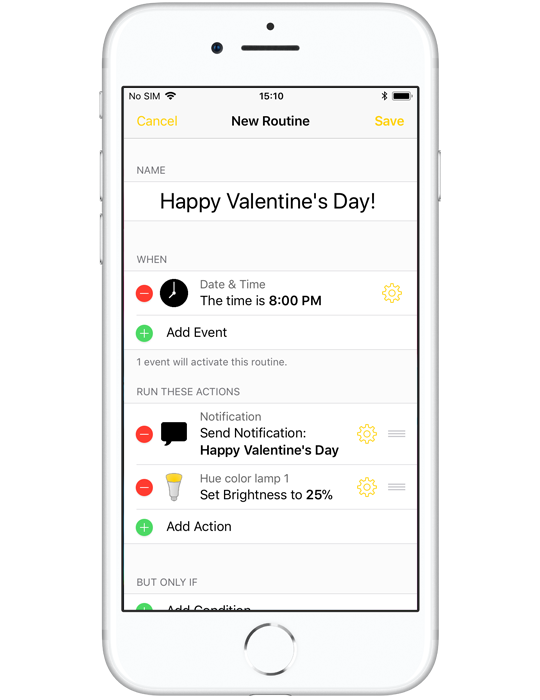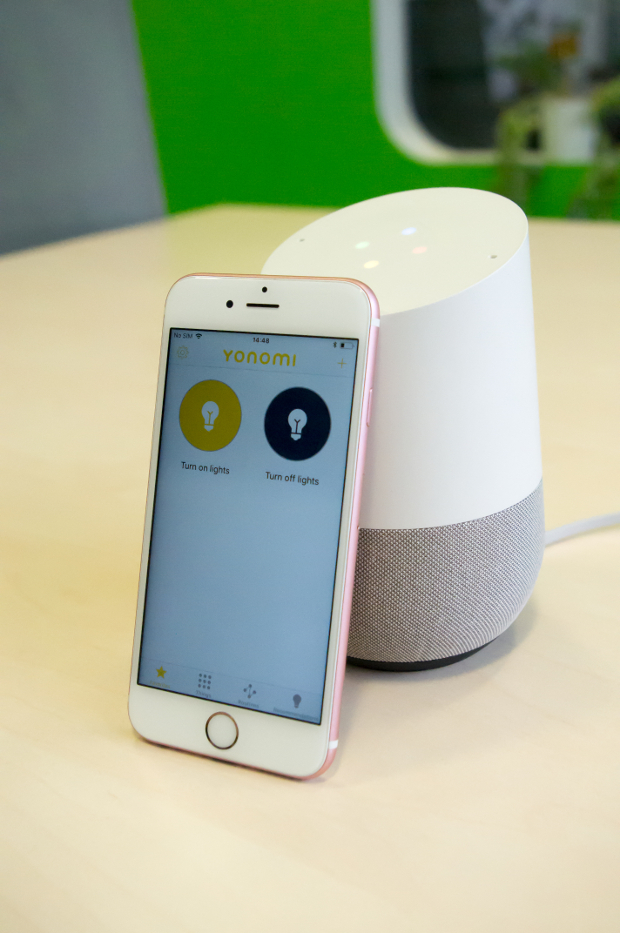Connect all your IoT devices with Yonomi
Posted 6 years ago by Vojtěch Červený

Here at profiq we are interested in all of the latest technologies. One of the hottest trends, IoT, and home automation or SmartHomes in particular, are on our radar. As with any new technology, IoT has some technical challenges including the need for protocol standards across IoT technologies. Big players like Facebook, Amazon, and Google are leading the space with their own APIs and protocols that work within their own set of devices but not uniformly with devices or sets of devices from other manufacturers. Given these differences in technologies, and standards that are still in development, how can we make all of these devices work together in the interim?
Yonomi, a startup based in Boulder, Colorado and Austin, TX, has a solution. In this blog post, we test Yonomi’s free app and cloud platform with a popular virtual assistant, Google Home.
The challenge of IoT
Perhaps the most popular industrial internet of things solutions is the Smart Home. Everything in our homes is becoming more intelligent. Our refrigerators can help us plan meals, create shopping lists, or notify us when food is about to reach their expiration date. Connected thermostats like Nest can turn on your heating a hour before you wake up, so you wake up to a warm home. While these devices make our lives easier, they tend to work independently of one another and often do not interact well with other devices.
This is the problem Yonomi is trying to solve. Yonomi uses APIs from different manufactures and integrates them in one single application. With Yonomi, we should theoretically be able to make these disparate Smart Home IoT devices work together.
The Yonomi App
Yonomi is a free app and cloud platform. The app is available on Android, iOS, and is compatible with voice assistants from Google and Amazon. All you need to do is to download the app, install it, and it’s ready to use. Once installed, the app automatically finds every supported IoT device in your home and shows you many ways to automate different actions or tasks.
The app uses IFTT technology and applies it in a Yonomi “Routine”. A Routine is a sequence of configurable actions that are executed. You can set up triggers to execute different actions on your devices. What’s nice about Yonomi is that it can start multiple events on multiple devices. It has many options for triggering any Routine. For example you can use location of your phone, specific time of day or even incoming call notification for triggering the Routine.
I think the biggest benefit of Yonomi is the many ways you can use one Routine with various devices from different manufacturers (Phillips, Sonos, TP-Link, etc.). One Routine can trigger several different devices in your home, and one device can trigger action in another one.
Another benefit is that you don’t need an application for every device—all you need is one Yonomi app to control everything. Here is an example:
Example – Valentines Day:
- Trigger: Time at 8:00 PM
- Actions:
- Send Mobile App Notification
- Set Brightness to 25%
You can have many Routines for every possible action and automate it in Yonomi. Yonomi also includes predefined Routines that are ready to use. You can use them as template for your own routines.
What if you want to use voice control to create a “playlist” or combination of prepared Routines for such special events that are not a part of daily life like a party, a romantic dinner, or quiet time for focus? The easiest way for such occasions is to use voice control. Yonomi supports smart voice assistants like Alexa or Google Home.
Google Home & Yonomi
Yonomi provides tutorials for enabling Yonomi in Google Assistant and Google Home, but they are brief. I’ve provided step-by-step instructions for doing this, and for using voice control to automate Routines for turning lights on and off in your home.
Before we get started, make sure you have the following in place:
- Google Home app for Android or iPhone
- The Yonomi app and a Yonomi account
- Yonomi Routines you’ve already created that you will trigger with your voice
To automate turning lights on and off using Yonomi in Google Assistant:
- From the Google Home app, select Additional options > Home Control.
- Select + to display the list of devices. Scroll down to the bottom of the alphabetical list and select Yonomi. The Yonomi authorization page displays.
- Enter your credentials from Yonomi and select Log in.
- Select Connect with Yonomi to complete the authorization process. On success, a list of your Routines displays.
At first glance, it appears that some of your Routines are missing from the list. In actuality, Yonomi combined some of your related Routines so executing them will be more efficient.
For example, if you have a Lights On Routine and a Lights Off Routine, Yonomi merges them into a Lights sections. - Next, we will assign the Lights Routine to specific rooms in your home. In the Routines list, tap the Lights Routine and select one of your rooms.
Repeat these steps for each room in your house that you want to run the Lights Routine in. - When you are finished, select Done.
- To activate the Lights Routine, say “Hey Google, start lights scene”
I encountered few problems during the set up. For example, I had problem with authentication so I had to restart the app few times before it proceed correctly. Another time, the app crashed while I was using the Spell Check option to edit editing the name of a Routine so try to avoid doing that. But this feature is still quite new, so hopefully it will be improved in the upcoming versions.
I also set up a similar Lights Routine with Philips Hue. After set up, I was able to control my lights easily. As mentioned earlier in this post, one of the advantages of the Yonomi is that you can add devices from different manufacturers and use Yonomi to run Routines from a variety of devices from different companies. So, in this instance, I used Yonomi to control both my Philips Hue smart lights and my TP-Link smart lights, which is pretty neat.
Conclusion
Yonomi is an interesting platform which is trying to solve the fragmentation of IoT devices by centralizing their management in one single app. So far, it supports the most common IoT devices on the market. Hopefully, they will support even more devices in future. The app delivers what it promises. Despite a few problems, in the end the app works well and seems to be ready for every day usage. I think I might use it with my Google Home regularly.
Do you know any other interesting startups in the IoT space we should explore? Let us know in the Comments section below.




